
 Twisted Damsel Larry Tullis Photos by the Author
|
|
|
|
|
Tying Steps: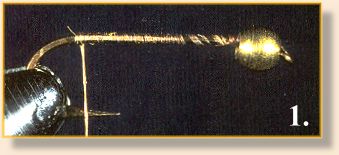
1. Thread metal or glass bead over hook point and to hook eye. Some
hooks won't allow beads to be threaded on, especially if the barb is
large. Bending the barb down often helps. Place hook in vise. Start
thread just behind the bead and put a base of thread on hook shank.
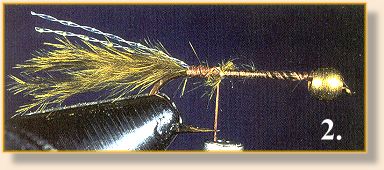 2. Tie in a sparse tail of very soft olive marabout about 1/2 to 3/4 inch long. Tie in two strands of Krystal Flash on top of the tail.
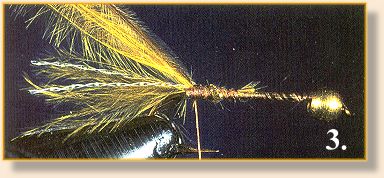 3. Select light olive and brown marabou that has very long strands. Remove 1/4 inch of each color and combine together so tips are even. Tie in marabou by the tips to the very end of the body. Leave thread there, don't wind forward.
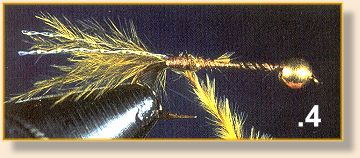 4. Bring the marabou around the back of the hook and combine it with the thread. Twist the marabou colors and the thread into one naturally-tapered strand of chenille. Fluff it out a bit.
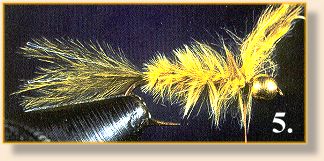 5. Wrap the strand forward evenly, covering the wraps underneath. When you get near the bead head, unwrap the marabou butt ends from the thread and secure the marabou with the thread. Trim excess marabou. If you want a wingcase, add that now by tying a short, soft fluff of marabou.
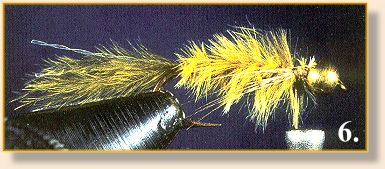 6. Tie in the dyed olive barred partridge fibers. Put a half dozen fibers on each side and leave them long.
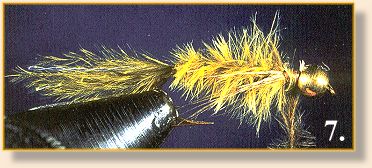 7. Tie in a small clump of darker olive marabou by the tips and twist it just like you did the body or tie in a peacock herl collar. Secure the ends and trim the excess.
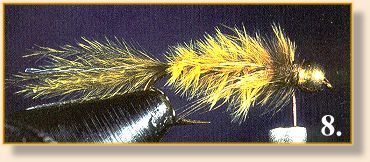 8. Tie the fly off behind the bead head using the usual half-hitches or whip finish and head cement. If desired, you can use small dots of black T-shirt paint on the bead head to simulate the eyes of the damselfly nymph.
Fishing the Twisted Damsel:For more great flies, check out: Beginning Fly Tying and Intermediate Fly Tying.
|